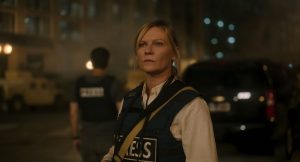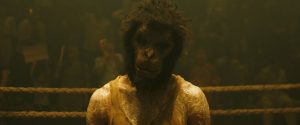Reviews include Irena’s Vow, The Beast, and Before I Change My Mind.
An Interview With: Hugh Gibson
January 25, 2017
A humble recipient of a major prize.
There is nothing in director Hugh Gibson’s demeanour to suggest that earlier this month, he stood before a room full of peers at the TFCA’s 20th annual Awards Gala to accept the 2016 Rogers Best Canadian Feature Award, which comes with $100,000, the richest film prize in Canada.
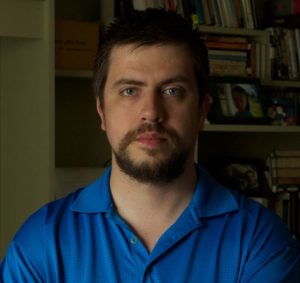 The Stairs, an insightful exploration on the culture of addiction, was Gibson’s baby for the better part of five years. He found himself following a community often seen as a bleak and potentially dangerous environment, interacting with the people living in Toronto’s Regent Park who have been passed over by society as self-destructive fringe-dwellers—architects of their own misfortune. But what makes The Stairs so revelatory is Gibson’s maturity as a filmmaker, putting aside assumptions to document a world that is tragic yet simultaneously poetic, filled with humour and self-awareness. Through its three central characters, Marty, Roxanne, and Greg, Gibson amplifies the voices of the unheard, resulting in a film that challenges assumptions of what life is like as a substance user in one of our city’s most notorious neighbourhoods.
The Stairs, an insightful exploration on the culture of addiction, was Gibson’s baby for the better part of five years. He found himself following a community often seen as a bleak and potentially dangerous environment, interacting with the people living in Toronto’s Regent Park who have been passed over by society as self-destructive fringe-dwellers—architects of their own misfortune. But what makes The Stairs so revelatory is Gibson’s maturity as a filmmaker, putting aside assumptions to document a world that is tragic yet simultaneously poetic, filled with humour and self-awareness. Through its three central characters, Marty, Roxanne, and Greg, Gibson amplifies the voices of the unheard, resulting in a film that challenges assumptions of what life is like as a substance user in one of our city’s most notorious neighbourhoods.
Thom Ernst spoke to Gibson in a café tucked onto a residential street, obscured from view by street-level construction. They discussed filmmaking, splitting the prize money, and giving the participants in his film the freedom to tell their own story.
Thom Ernst: What thoughts went through your mind on Tuesday night when your name was called as the winner of the Rogers Best Canadian Film Award?
Hugh Gibson: Surprise. Then excitement. Then fear, because I didn’t prepare a speech, so my head and stomach were churning like the inside of a washing machine. But it was special to share that moment with my partner Selina, and I’m pleased that the award is helping the film reach a wider audience.
Word about your decision to split the $100,00.00 prize money with your co-nominees ($110,000.00 when adding in the $5,000 awarded to the runners-up) sparked a long thread of emails within the TFCA membership—many expressing how moved they were but such a generous act.
People are under the impression that I’m some saintly philanthropist, but the decision to share the award money was made together. Kazik (Radwanski), Matt (Johnson) and I are friends. We knew going into the gala that no matter who won, the award would be split three ways.
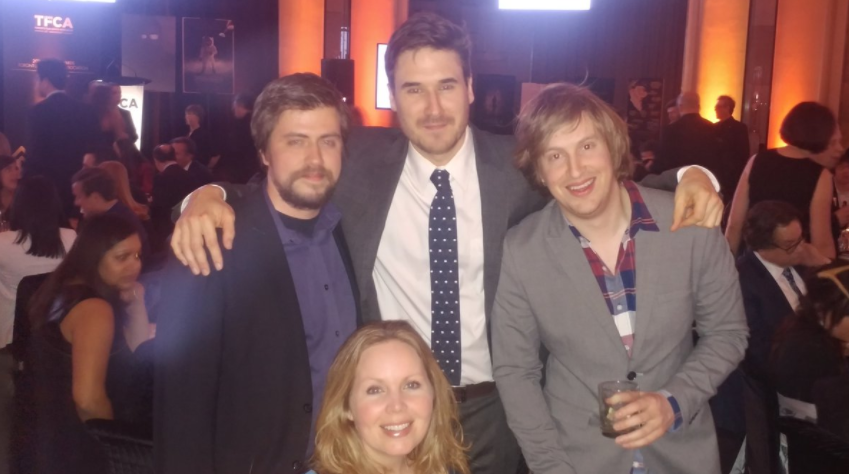
Your gesture matches the tone of the Gala, where many speeches were infused with a “now more than ever” call for unity and cooperation in the industry. Still, I must ask, was there a fleeting moment when you thought, “Wow, I could really use the money?”
Haha. No. Of course, having access to that kind of money is great, but it’s more than our budgets. And I’m a man of my word.
So, the three of you created a win, win, win, situation. Do you think by sharing the award this year, you have set a precedent?
I’d be happy if others are inspired by our actions to form more of a community. But as for a precedent, I think that’s already been set: Matt has used the opportunity of his success to support women filmmakers, and Kazik supports many indie artists through his screening series.
Your film is remarkably balanced. How did you come to make the film that you made?
Wow. How to sum up five-years in a sentence of two? In 2011, I was hired to shoot educational videos for the community; safer strategies for sex workers, programs for crack users. I spent a great deal of time interviewing the characters and I shot a lot of footage. I shot more footage than needed. I approach the characters with curiosity and without judgement, they respond to that. I made them part of the storytelling process. They get to dictate what we see. It’s Marty who shows us the stairwell.
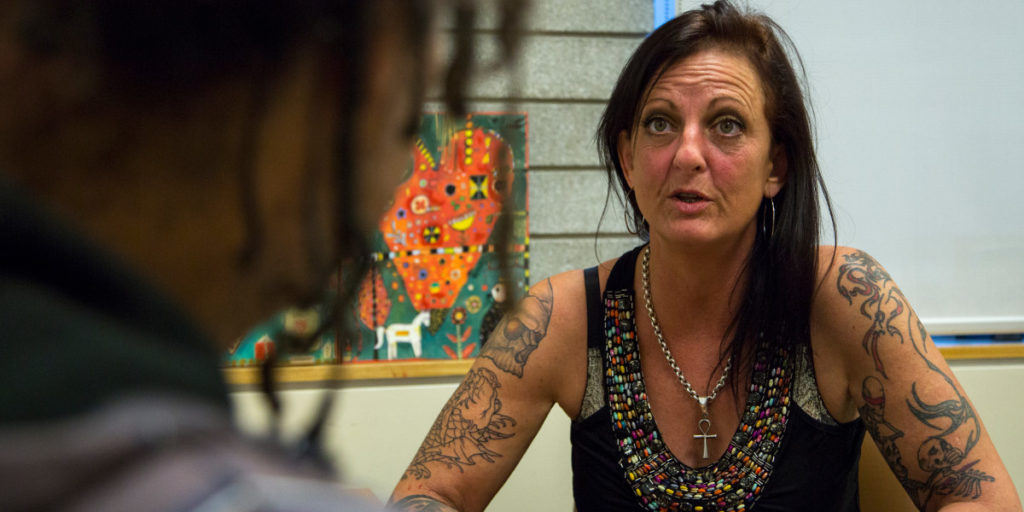
Roxanne wanted us to see how the corner she works on at 3 AM looks like at 3 AM. Sure, we could have shot at 8 PM and no one would be able to tell the difference, but it was important for Roxanne for us to see what it was like when the bars close. So, at 3 AM, we took our cameras and filmed Roxanne’s corner.
Greg enjoys sharing things about his life. He is very proud about where he lives and was happy to invite us into his home. Marty even wanted to read some of his poetry.
I gave them the opportunity to express themselves, the chance to show themselves as they really are; that their lifestyle is not something they should be ashamed of.
It’s interesting Marty freely admits to being a substance user and that he enjoys using. He seems to know what he’s doing. He’s functional, as if he controls the drug rather than the drug controlling him. But I wonder if some of that, not just with Marty but with substance users in general, is not a bit of a delusion—a way of justifying the drug and ignoring its effects.
Mental health issues are a huge factor in their using, so is childhood trauma.
You referred to the subjects of your documentary as “characters.” Is the term ‘subject’ too clinical?
Good point. It’s just short hand for me. I like the term “participants.” But “subjects” is good and characters is fine. At TIFF, Marty referred to himself as a character.

People respond positively to the way the film offers an alternative view of drug culture. How has spending time with the film’s participants altered your own perception of this culture?
My perception changed simply from learning more and more. I went in knowing nothing and I tried to have no judgement. Being curious and open-minded served me well.
Making the film made me more attuned to all sort of things. One example is the language around street involvement. For instance, think of a common phrase like “getting clean.” Is someone who uses drugs dirty? Less of a person? Many stigmas are sadly normalized. Given the warm, funny, and smart people I’ve known, who often struggle with a host of complex issues, it can be particularly odious to hear people referred to as things like a crackhead or bum.
There’s a strong sense here that you, as the filmmaker, are an invited guest, rather than simply someone with a camera who has permission to film. How do you get to their stories without them feeling as though they’re being interrogated?
I truly went in without judgement. But I did learn to keep things into perspective.
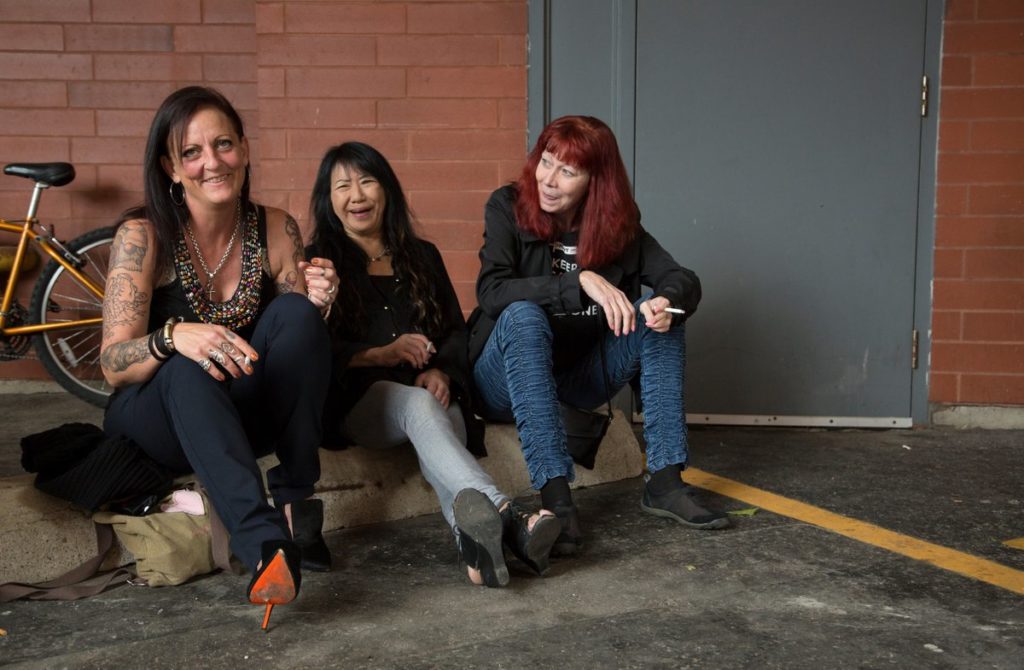
Early in the project there was a woman, Lisa, very tough, someone you don’t fuck with. Originally, Lisa was to be one of the main characters we focus on. Sadly, she passed on before completing the film.
Before we began shooting, I discussed the interview in detail with Lisa and a social worker. We had prepared and [Lisa] assured us that she wanted to participate. But on the day [of the interview], she was very anxious and she was triggered by traumatic memories. She insisted that we proceed with filming because she had things she wanted to get off her chest and express. But she couldn’t handle it and had to leave. It was quite upsetting. I wasn’t prepared for that. I did not want to be the cause of her suffering.
That same day, we run into a sex-worker who missed a scheduled interview, which annoyed me because a missed interview costs money. She runs up to me to apologize, explaining she had spent the night in the hospital after a “bad date.”
So, while I was upset about the cost of equipment, she was in the hospital being recovering from an abusive date.
So, Lisa isn’t in the film.
She is, in passing. You can see her in photos on Marty’s wall dedicated to people in the community who have died.
It was Lisa who helped me understand how to proceed with the film. We held meetings with the participants before shooting so that we could understand each other’s expectations, and to further assure them that they have a vital part in how they are portrayed. Someone asks, “How will we know when the film’s done?” And I thought, good question. It’s Lisa who says, “Well, that’s up to us, isn’t it?”
I’m glad to say that we saw each other many times after that and she did subsequently participate in shooting, which was always very powerful. I dedicated all the screenings during TIFF to her and the other people in the community who we lost along the way.
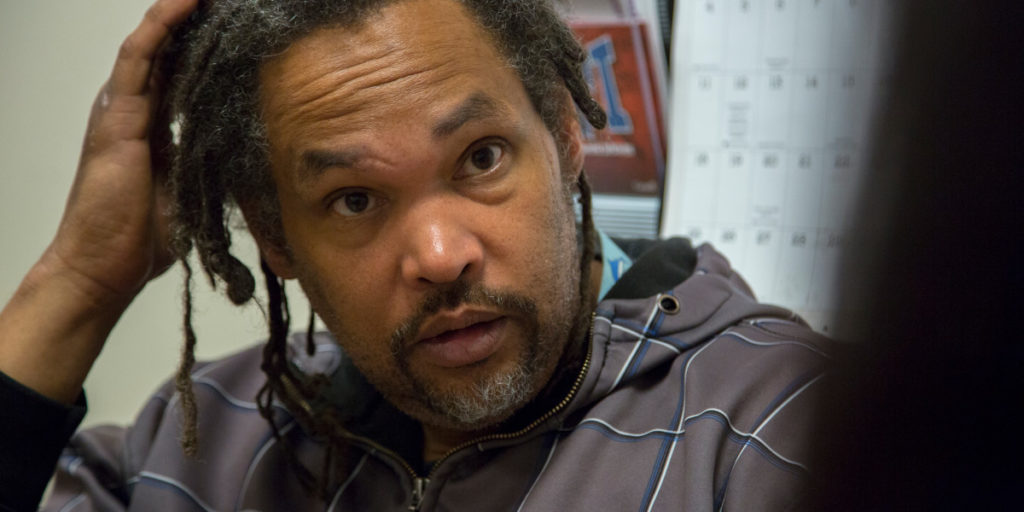
The people in the film mean a great deal to you. In what ways are you able to share with them the success of the film?
They’ve been part of the film’s exhibition, and they continue to share their voices by participating in events around the film. Their involvement is also empowering. They’ve played a role in the changing landscape of drug policy and harm reduction.
Despite the strength of the relationships you’ve developed with the “cast,” shooting this must have been, at times, emotionally and physically taxing. What do you do to decompress?
I had to occasionally step away. I did the things I like: hiking, watching funny television shows, attending Canada’s Top Ten with my mother. Watching the Toronto Blue Jays is a great way to unwind.
What’s next? Another documentary?
There are a lot of types of filmmaking I want to explore. A lot of different genres and techniques to think about. Right now, we’re working on getting distribution.
So you don’t have a distributor yet?
Haha. Oh, there are things in the works.


